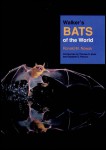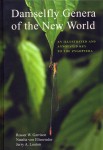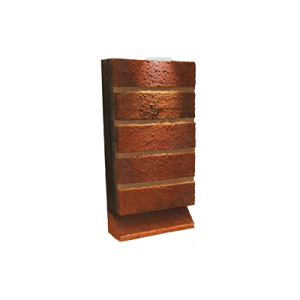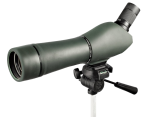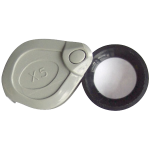We recently received the following information from Wildlife Acoustics to help you get the most out of your 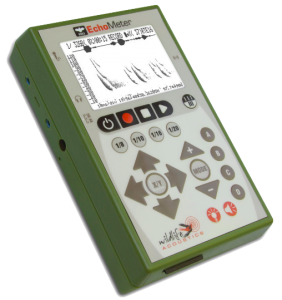 Echo Meter EM3
Echo Meter EM3
Dear EM3 User,
Congratulations on your purchase of the Wildlife Acoustics Echo Meter EM3 Bat Detector! We think the EM3 represents the most advanced technology available in a handheld detector and provides unparalleled functionality at a fraction of the price of other professional detectors. A piece of equipment with this much technology does, however, have a learning curve. To help you master the skills necessary to get the best performance from your new detector we would like to share some tips and best practices (and common mistakes) we have learned since its release. We think the following information will help you get the most out of your EM3.
Update your firmware!
We are constantly making improvements to all of our products via firmware updates. These improvements can include important bug fixes as well as new functionality or requested features. We provide these updates at no charge to add further value to our products. Please go to www.wildlifeacoustics.com/downloads to download the latest version of firmware and read the release notes on what has changed. The current firmware version loaded on your Echo Meter can be seen on the top left of the “splash screen” at start-up. At the time of this email we are on version 1.1.2.
Introducing a whole new approach to zero crossing
With this email we would like to introduce a free new software we have developed called Kaleidoscope and a whole new approach to zero crossing. Kaleidoscope converts WAV or WAC files into zero crossing files with incredible quality and speed. In fact the results are superior not only to any existing zero crossing conversion software but they are also superior to what would be possible with native zero crossing. Don’t just trust us, try it and let us know what you think!
The conversion is incredibly fast. It can convert several nights of data in just a few minutes. This represents a 30x improvement over our existing WAC2WAV software, which was on par or faster than any other conversion software.
Kaleidoscope can even convert zero crossing to WAV (yes you read that right). This is a great way to be able to convert your Zero Crossing files into audible WAV files. Kaleidoscope is available on the download page of our site (see the link above). It is currently in Beta and will ultimately replace our WAC2WAV conversion software.
What about native zero crossing?
As you know the EM3 also has the ability to record zero crossing files natively and you might be wondering how that compares to full spectrum files converted to zero crossing using Kaleidoscope. We feel the results from Kaleidoscope are superior to native zero crossing, whether it be on the EM3 or any other zero crossing recorder. The zero crossing results from Kaleidoscope are so good and the conversion is so fast that we are now recommending this as the best approach. Feel free to test this out if you need convincing. You can record simultaneously in WAV and zero crossing, convert the WAV files to zero crossing and compare the results.
If you do prefer to stick with the native zero crossing, here are a couple tips to get the best results. Always be sure to adjust the zero crossing sensitivity (just hold down the speaker button until you enter FDAdj made). The default setting is quite high and will not pick up many bats. Also, always adjust the setting using headphones. If you adjust using the speaker, the feedback from the speaker will result in a much higher than optimal setting. You want to set the level just to the point where you only hear a little noise rather than a constant din of noise. This should be three or four squares on the display.
We have found that the GPS attachment for the EM3 can introduce noise into the zero crossing circuit. This necessitates setting the sensitivity up a couple squares. For best zero crossing results with the GPS please consider our recommendation to use WAC and convert using Kaleidoscope. As an added bonus, when using the GPS in WAC mode, you will retain not only the location of every recording but the entire transect path. Kaleidoscope can output the recording locations and the path during the conversion process into a KML file compatible with Google Earth!
Try Real Time Expansion (RTE)!
We have included three monitoring modes in the EM3. Heterodyne and Frequency Division were included for those familiar and comfortable with those technologies. We also developed our own novel technique for monitoring called Real Time Expansion. This technique provides all of the frequency and timing information of the original call. It has superior tonality to Frequency Division and does not require tuning like Heterodyne. We consider it the best monitoring method on the market. If you have been using Heterodyne or Frequency Division, we strongly encourage you to try RTE.
Screen adjustments
Remember that you can adjust both the brightness and contrast of the screen to suit any lighting condition and preference. If you momentarily press and release the Display button, you can then adjust brightness using either the Plus and Minus buttons or Up and Down buttons. The contrast is adjusted using the Right and Left Arrow buttons. You can also switch between “black on white” and “white on black” display modes by holding down the Display button.
Getting back to the present
We have seen a common confusion where users are monitoring for bats while scrolling back through the spectrogram buffer to look at past calls. When you are viewing calls at or near the end of the buffer and a bat comes along the end of the buffer begins to disappear as new data is written to the front. This can give the illusion that you are viewing “the present bat” because the buffer begins to move making the spectrogram scroll. To get “back to the present” to see the new bat calls being written to the spectrogram, just double click the X/Y button.
Use headphones for best sound quality
The speaker on the EM3 was included for convenience and can provide an excellent monitoring experience, but for the very best quality, we encourage you to try monitoring with headphones. Headphones have better fidelity, greater volume and more bandwidth than the speaker so they really bring the bat playback to life.
Always use the EM3 with charged batteries
The EM3 monitors battery level and automatically shuts down when the battery is near depletion. This prevents the circuitry from getting into a state where it is not appropriately powered resulting in erratic behavior. But if you power up the unit with nearly depleted batteries, it will exhibit this erratic behavior before the detector gets the chance to determine that the batteries are nearly depleted. It will be stuck in bad state and you will not be able to power down without removing a battery. Batteries tend to regain voltage over short durations of no use. This means that if you do not charge the batteries after using them and then power up the detector after some time, the batteries will have regained just enough voltage to power up but not enough to supply proper power. Also be aware, that the EM3 is never truly off, but in a deep sleep state so as to be able to retain the spectrogram buffer and clock. After a few weeks the batteries will deplete even after no use.
If you get stuck, reset
If, while using the EM3, you find that you have made a bad setting or gotten into an unknown state you can always reset the unit back to factory defaults. You simply pop a battery from the battery tray and reinsert while holding down the left button. Continue holding the button until the splash screen appears. Sometimes an apparently broken unit can be something as simple as the brightness having been turned quite a low at night appearing as though it won’t power up in the morning! This procedure would reset the brightness setting to default, apparently bringing the unit back to life.
Happy detecting.
Wildlife Acoustics, Inc.

NHBS Equipment Team:
+44 (0)1803 865913
customer.services@nhbs.co.uk









